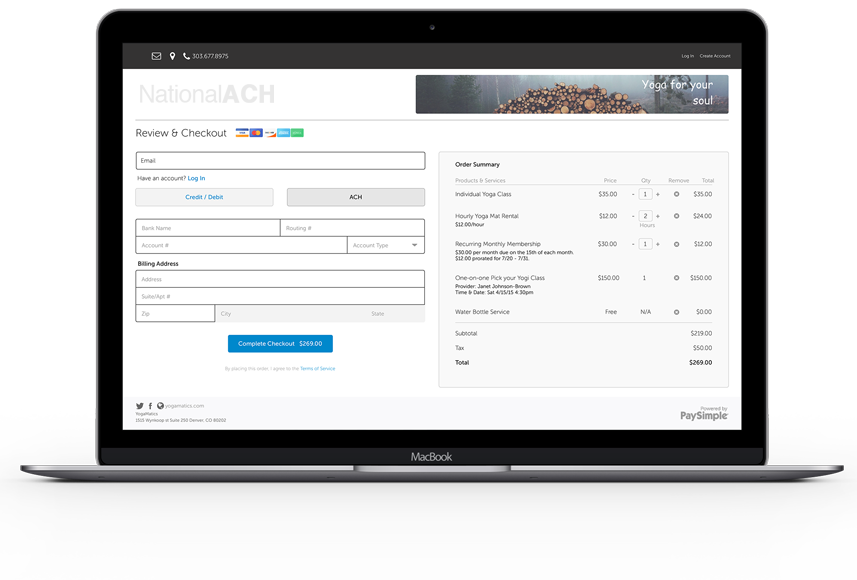ACH Trumps Cards for Recurring Billing
Protect Cash Flow with Echecks
Encouraging your customers to use ACH for recurring payments stabilizes cash flow, saves money, and increases the long-term value of your customers to your business.
Recurring Billing Business Opportunity
Traditionally, ACH merchant accounts have been used for collecting payments for monthly bills such as utilities, car notes, insurance and mortgages,
Within the last 10 years, however, the growth of recurring billing has soared.
Software & computer services have moved to a recurring billing models with software as a service (SaaS) and easy payments for equipment. Entertainment sites offer video streaming, music, games. Phone companies, always a recurring billing model, now offer apps that are paid for monthly.
Giving your customers the ability to pay for your goods & services on an recurring basis is simply smart business. Easy payment plans are convenient for buyers. And recurring billing is well-ingrained in the buying habits of most Americans.
Recurring Billing as Part of Your Business Model
Ventana Research released in early 2015 their benchmark study about recurring billing which sheds light on why companies choose to implement this feature and what challenges arise while it is being used.
When asked to state the reasons for using recurring billing, the most common answers picked by those included in the survey were to:
- Increase revenue (51%)
- improve customer satisfaction (51%)
- Increase customer loyalty (46%)
- Expand into new markets (44%)
- Improve customer satisfaction scores (41%)
The respondents were also asked to choose the most difficult challenges that come along with the use of recurring billing. The results revealed their most common concerns:
- Customer engagement throughout life cycle (55%)
- Cross-selling and up-selling (46%)
- Customer retention (39%)
- Creating new accounts (34%)
- Invoicing (33%)
Most of these concerns can be overcome or entirely eliminated through various techniques, which will enable you to take advantage of the full potential of recurring billing.
Overall, the conclusion of the study was that the success of recurring payments is quite certain as long as sales, billing, and customer support functions align with the billing model.
ACH Payments Are Perfect for Recurring Billing
The recurring billing feature offered by ACH payments is one of the key components in stabilizing your cash flow.
Information necessary for ACH transactions is far more stable than credit card information, making it the preferred method of payments for recurring billing. Once ACH payments begin, there is seldom any change in billing information since people rarely change bank accounts. Leading to fewer instances in which the payment cannot be processed due to expired information.
Compare this to card transactions.
Cards expire. They get lost or stolen. Data breaches mean cards must be reissued. Requiring you to obtain new billing information from your customers.
Updating payment data is a big project for your customer service staff. Which can result in customer dissatisfaction if services have to be terminated due to lack of current billing information. Plus, asking for updated billing info gives your customers an unnecessary reason to cancel.
Conclusion
Recurring ACH payments stabilize cash flow, decrease expenses, and increases customer satisfaction. “Set it and forget it” recurring billing keeps the money flowing in.
Interested in an echeck account to protect cash flow from recurring billing?
Contact info@nationalach.com today
